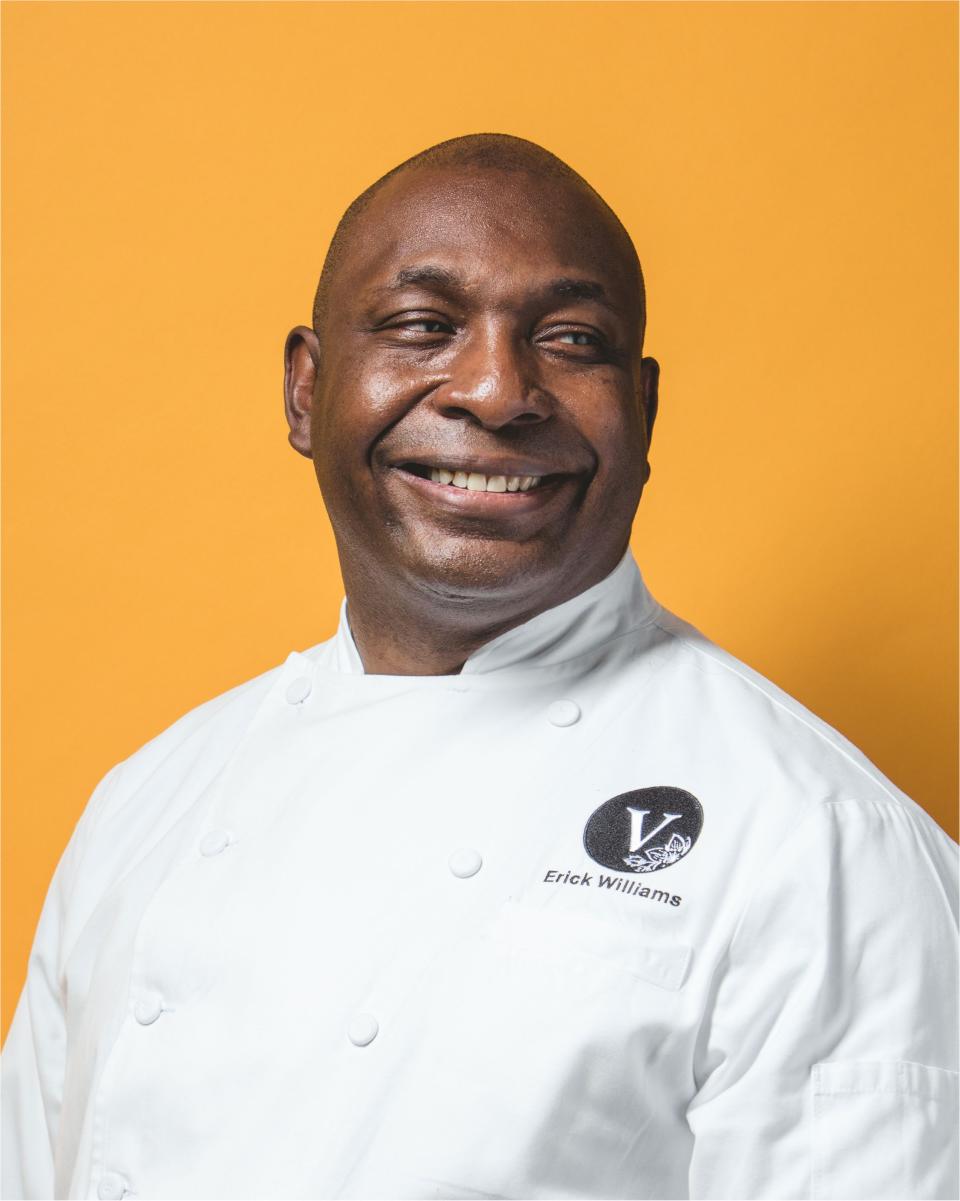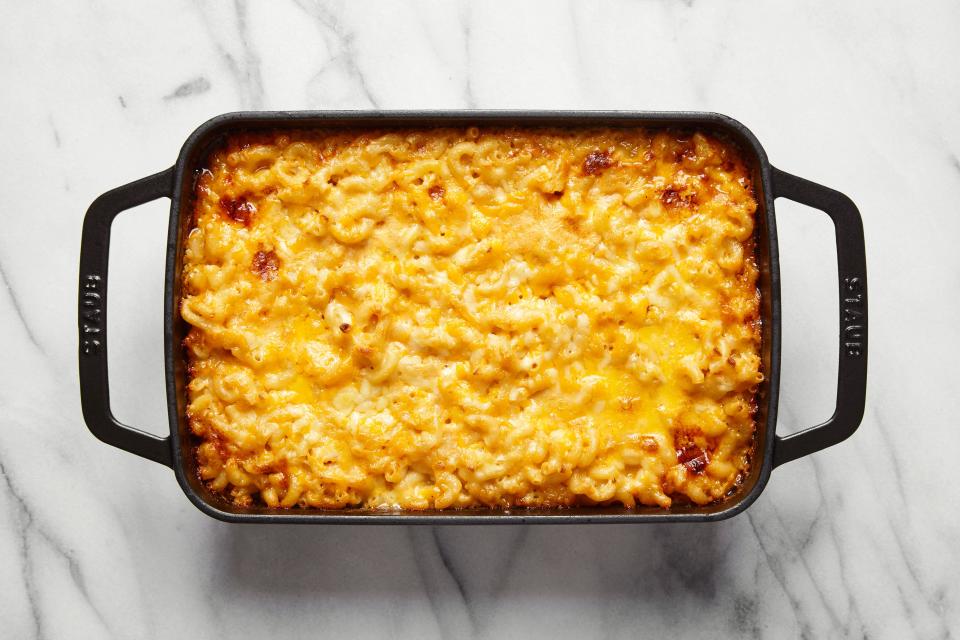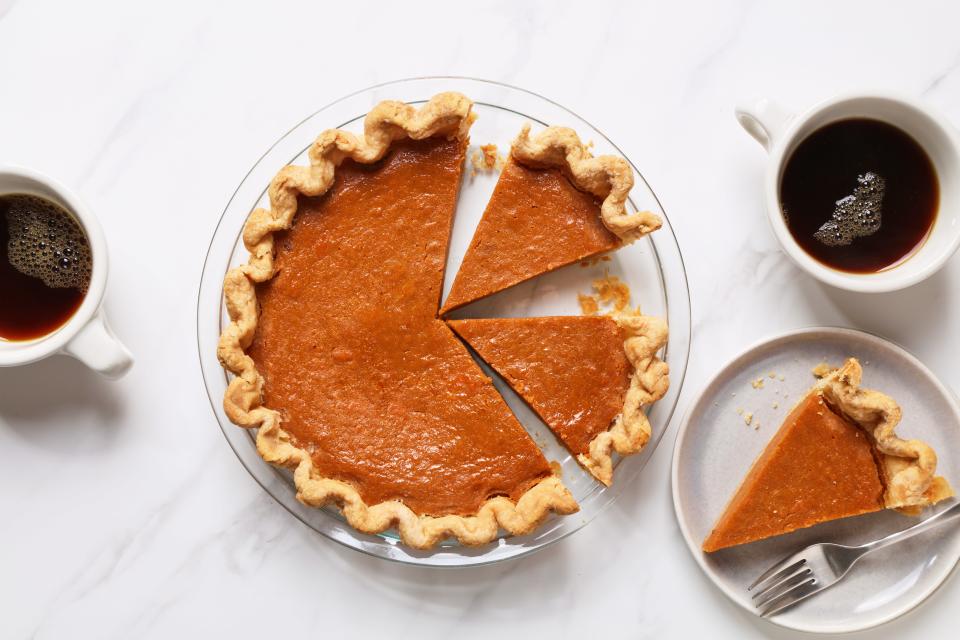The Perfect Thanksgiving Mac and Cheese, From the Chef Who Was Most Ambivalent About It
- Oops!Something went wrong.Please try again later.
Chef Erick Williams used to look forward to Thanksgiving as the day when he'd eat that special once-a-year food: a bowl of cereal.
“For years I used to do homeless feeds on Thanksgiving so that I could get out of the cooking at home, which is a much heavier lift,” he explains. “Home stoves are weird; there’s not enough space in a lot of home kitchens; it’s an all-day event.” But when cooking for people experiencing homelessness, he says, “I can get up early in the morning. I can put out a lot of food that’s delicious. It’s super rewarding. And then I could be home at 11 and then sit and eat cereal. I’d sit on the couch, watch sports, and everybody would be out of my house because they would all be out celebrating Thanksgiving, and I could relax.”
The cereal years coincided with Williams’s long legendary run as the executive chef at mk, a French and Italian-leaning restaurant that was a fixture in Chicago’s River North neighborhood. But for the past few years he’s been planning, opening, and operating his own restaurant—Virtue, in Chicago’s Hyde Park neighborhood—and has had less time for volunteering. That means he’s leaned in, just slightly, to Thanksgiving at home. He makes the turkey for his family’s celebration now. Sometimes he even sticks around long enough to eat some of it.

For all his ambivalence about celebrating Thanksgiving, Williams is nevertheless very opinionated about how Thanksgiving food should taste. He stuffs the cavity of his turkey with a mirepoix of celery, carrot, onion, and apple. He thinks that green beans should be simmered in broth until they’re completely soft—”none of that al dente stuff,” he say. The greens can be collards, mustard greens, turnip greens, or spinach—but don’t mix the collards and the spinach. (Mixing the turnips, mustards, and spinach is okay.) And the mac and cheese—well, the mac and cheese wasn’t on the chef’s mind, because up until a few years ago he’d never been a fan.
He objected mostly to the texture. “In a lot of homes, the noodles are cooked until they’re soft. Not al dente, but soft. Then you mix all the hot ingredients into the mac. And then you layer it in the pan. You add more cheese. Then you bake it again to brown the cheese. So that’s a lot of cooking the pasta for me.”
You can see why a chef who has spent his career in French and Italian kitchens would object. But when he started planning the menu for Virtue, where he serves American southern food, Williams had to face mac and cheese straight on. His chef de cuisine, Damarr Brown, broke the news to Williams.
“He was like, ‘We gotta put macaroni and cheese on this menu.’ And I’m like ‘You gotta be nuts, no way we’re doing macaroni and cheese. That’s not my jam.’”
Williams knew that few dishes conjure as much emotion as a mac and cheese. He’d seen it in his own family growing up, and in the families around him, where mac and cheese was, he says, “revered.”

“The mac and cheese shows up at different events. It could be at a wedding. It could be when a child’s born. It shows up at Thanksgiving and all these festive opportunities. And it shows up at funerals. So the highs and lows of your life are coupled with the security blanket of this damn mac and cheese.”
Who could blame him for not wanting to wade into those waters? But Brown persisted. And after a couple of years of tinkering with the recipe, Williams finally came around to the dish. So much so that he’s now as opinionated about it as he is about everything else on the Thanksgiving table.
His strongest opinion:“I don’t like cheese charred. I don’t like crunchy edges.” Williams’s mac and cheese has texture, but the texture comes from the (just-cooked) pasta; the silky cheese sauce that envelops the pasta; and two layers of cheddar, one that runs through the middle and one that goes on top. That cheddar “melts to have a texture that’s different from the texture of the pasta, different from the velvety cheese sauce that’s in there.”
And that’s why Williams forgoes breadcrumbs on his mac. “I understand why people like breadcrumbs, because if you cook the macaroni and cheese as much as people cook macaroni and cheese, there’s a lack of texture.” But if you cook your mac and cheese correctly, he reasons, breadcrumbs shouldn’t be necessary.

Of course, cooking correctly is relative. Williams knows that. He knows that when you’re dealing with mac and cheese, everybody has a different idea of what’s correct, and often that idea is informed by tradition. What’s correct is a grandparent’s recipe. Or the mac that only your aunt can make. In some ways, introducing a new mac and cheese recipe into a Thanksgiving celebration is pointless.
“Even if you have what some would say are superior ingredients. If you have better cheese. If you have better pasta. If the pasta is cooked perfectly. If the cheese sauce is as velvety as any cheese sauce is supposed to be, without any graininess and a high level of richness. You would still have a hard time competing, because you can’t match the nostalgic place. They know there’s something different about it. And with nostalgia, you really just want to sit with your memories alongside the food. It’s a very comforting space. It’s a space where you go when you’re going through hard times in life. It’s a space you go to when you’re celebrating.”
Still, the chef wanted to try. Williams dipped into his own nostalgia to curate this Thanksgiving menu, which is based on his own family experiences. The mac and cheese is a new recipe, but it fits right in.

Originally Appeared on Epicurious

